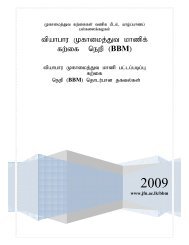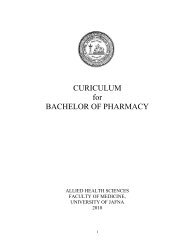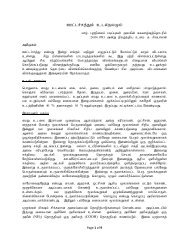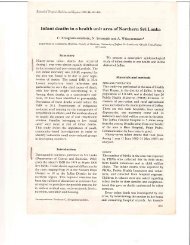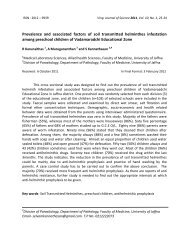MANUAL PHYSIOLOGY PRACTICAL - Repository:The Medical ...
MANUAL PHYSIOLOGY PRACTICAL - Repository:The Medical ...
MANUAL PHYSIOLOGY PRACTICAL - Repository:The Medical ...
Create successful ePaper yourself
Turn your PDF publications into a flip-book with our unique Google optimized e-Paper software.
FM/UOJ<br />
Measurement of the body surface area<br />
<strong>The</strong> surface area has been found to correlate well with many physiological parameters<br />
such as cardiac output and metabolic rate. In common practice these parameters are expressed<br />
as per unit surface area.<br />
Method:<br />
Direct measurement of surface area is very difficult and time consuming and hence<br />
not suitable for routine measurement. This can be determined indirectly from a nomogram<br />
using height and weight.<br />
Exercise:<br />
Determine the surface area.<br />
Measurement of Body Fat.<br />
Fat is found in the body in two main forms: structural fat and stored fat. Structural fat<br />
is relatively small amount and is in proportion to the mass of the tissues. Stored fat is found<br />
in adipose tissue which is seen in specific areas. <strong>The</strong> amount of stored fat differs among<br />
individuals.<br />
<strong>The</strong> best method to measure the body fat accurately is to analyze the body chemically.<br />
Since this method is not possible in live animals, indirect methods are employed.<br />
Measurements based on body density, body water, or body potassium are laborious and<br />
usually applied for measurements on small number of subjects for research purposes. An easy<br />
method which is accurate enough for routine measurement is to predict the fat content from<br />
skin-fold thickness.<br />
Instrument:<br />
Harpenden skin-fold calipers.<br />
Method:<br />
<strong>The</strong> subject sits on a stool comfortably. At the sites of measurement, skin-fold is<br />
pinched up firmly between the thumb and forefinger and pulled away slightly from the<br />
underlying tissue before applying the calipers. <strong>The</strong> calipers are applied so that the foot plate<br />
is vertical to the surface. <strong>The</strong> calipers exert constant pressure at varying opening of the jaws.<br />
<strong>The</strong> width of the opening is read off a scale incorporated in the apparatus. <strong>The</strong> reading is<br />
taken when the needle in the scale stabilizes soon after the application. All measurements are<br />
taken on the right side of the body. At least four measurements are made in each standard site<br />
and the mean is calculated.<br />
<strong>The</strong> standard sites for measurements are:<br />
Biceps: Over the mid-point of the muscle belly with the arm resting supinated on the<br />
subject’s thigh.<br />
Triceps: Over the mid-point of the muscle belly, mid-way between the olecranon and<br />
the tip of the acromian with the upper arm hanging vertically.<br />
Subscapular: Just below the tip of the inferior angle of the scapula, the arm hanging<br />
vertically, at an angle of about 45° to the vertical.<br />
Suprailiac: Just above the iliac crest in the mid-axillary line.<br />
Introductory<br />
Page | 8




